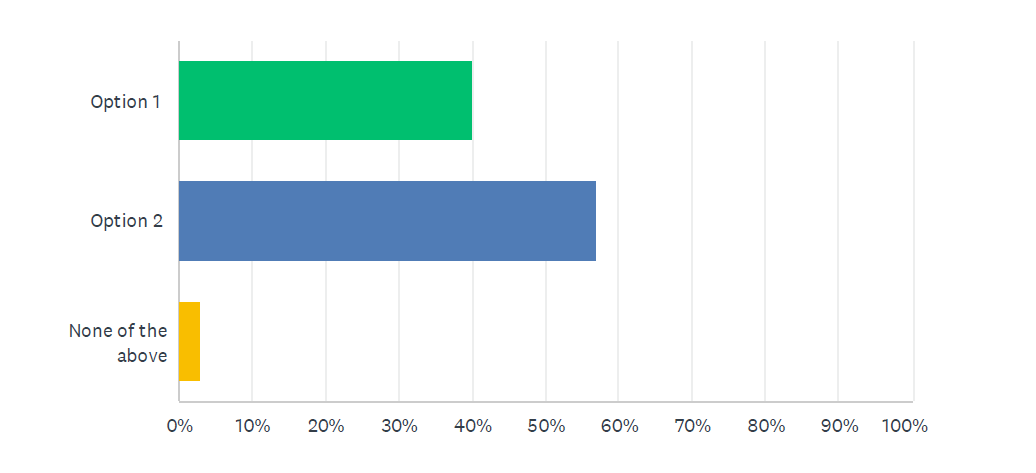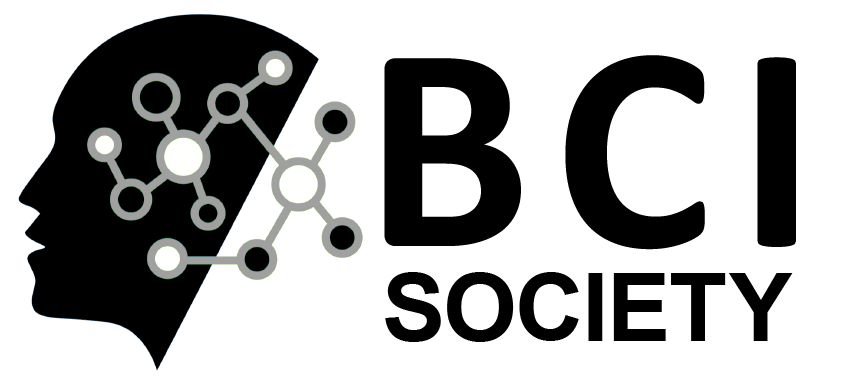BCI Definition
BCI Working Definition:
A brain-computer interface is a system that measures brain activity and converts it in (nearly) real-time into functionally useful outputs to replace, restore, enhance, supplement, and/or improve the natural outputs of the brain, thereby changing the ongoing interactions between the brain and its external or internal environments. It may additionally modify brain activity using targeted delivery of stimuli to create functionally useful inputs to the brain.
Key terms:
• “Brain” includes the cerebrum, the diencephalon, the brainstem, and the cerebellum. It does not include the cranial nerves. Furthermore, it does not include the measurement of intention or information (that could have originated in the brain) obtained from downstream areas of the nervous system (e.g. peripheral nerves or muscles).
• “Computer” may refer to a device typically referred to as a computer, but also to other computerized devices, such as robot arms, electrical stimulation devices, powered wheelchairs etc.
• The terms “internal”, “external”, “input”, and “output” should be read in relation to the brain as defined above.
Please note that the selected working definition will not serve as a strict delineation of the interests of the BCI Society: knowledge gained in the wider areas of interaction between the CNS and its external and internal environments, neuroimaging, neurostimulation and other neighbouring fields will remain highly valuable for the development of usable BCIs.
In the first months of 2024, an ad hoc BCI Society committee has coordinated the process of developing a definition of a BCI.
On February 5, 2024, we called for input among the wide spectrum of BCI stakeholders on several key considerations and possible definitions of a BCI. A total of 147 respondents, 94 of whom identified as BCI Society members, filled out the survey, which contained three multiple choice questions related to specific components of the definition:
- Should a definition of a BCI more clearly define the brain as the interface target, rather than the entire central nervous system (CNS)?
- Should a definition of a BCI include a description of a system that (only, or in addition to reading and decoding brain signals) modulates or modifies brain function?
- Should a definition of a BCI require the brain activity to contain information about the ongoing intention of the user?
Also, the survey contained a multiple-choice question that asked about the preference of respondents for the 2012 Definition of Wolpaw and Wolpaw, for one of three proposed revised definitions, or for yet another definition.
In Figure 1 below, the results of the four multiple choice questions are provided. From the results, it can be inferred that the majority of respondents felt that 1) only the brain can be the interface target of a BCI, 2) the flow of information can be from the brain to the environment, from the environment to the brain, or both, 3) it is not necessary for the brain activity measured during BCI use to contain information about the intention of the user. In addition, and in line with these responses, revised definition 3 was preferred over the alternatives.

Figure 1. Responses of BCI stakeholders to the multiple choice questions of the BCI Definition survey. Please note that this figure displays results from all respondents. Results were similar for BCI Society members: 73.4% indicated that only the brain can be the interface target, 78.7% that the flow of information can be from the brain to the environment, from the environment to the brain, or both, and 67.0% that it is not necessary for the brain activity measured during BCI use to contain information about the intention of the user. Revised definition 3 was the preferred choice of 59.6% of BCI Society members.
In addition to the answers to the multiple choice questions, many respondents provided valuable comments and suggestions. From the answers to the multiple-choice questions and the comments, it became clear that different respondents had quite different opinions on specific topics, and that it is difficult to satisfy the whole BCI community with one specific definition. To ensure maximum broad support for a definition, the BCI definition committee decided to follow the majority votes to the multiple-choice questions, and take Revised Definition 3 as a starting point for the next step. Based on the answers to the open questions, the committee also concluded that one topic required further attention. Several respondents indicated that the flow of information can be brain-to-environment, or bidirectional, but no environment-to-brain only. This distinction was not made in the multiple choice options in original the survey, however.
Based on the answers to the multiple choice and open questions, the BCI Society invited current and recent BCI Society members to vote on a working definition for a BCI on May 3, 2024. Two options were presented, accompanied by explanations of key terms:
Option 1.
A brain-computer interface is a system that measures brain activity and converts it in (nearly) real-time into functionally useful outputs to replace, restore, enhance, supplement, and/or improve the natural outputs of the brain and/or modifies brain activity using targeted delivery of stimuli to create functionally useful inputs to the brain, thereby changing the ongoing interactions between the brain and its external or internal environments.
Option 2.
A brain-computer interface is a system that measures brain activity and converts it in (nearly) real-time into functionally useful outputs to replace, restore, enhance, supplement, and/or improve the natural outputs of the brain, thereby changing the ongoing interactions between the brain and its external or internal environments. It may additionally modify brain activity using targeted delivery of stimuli to create functionally useful inputs to the brain.
Key terms.
• “Brain” includes the cerebrum, the diencephalon, the brainstem, and the cerebellum. It does not include the cranial nerves. Furthermore, it does not include the measurement of intention or information (that could have originated in the brain) obtained from downstream areas of the nervous system (e.g. peripheral nerves or muscles).
• “Computer” may refer to a device typically referred to as a computer, but also to other computerized devices, such as robot arms, electrical stimulation devices, powered wheelchairs etc.
• The terms “internal”, “external”, “input”, and “output” should be read in relation to the brain as defined above.
A total of 137 recent and current BCI Society members shared their vote. Of these, 55 (40%) were in favor of Option 1, 78 (57%) in favor of Option 2, and 4 people (3%) selected ‘None of the above’ (Figure 2).

Figure 2. Results from the vote for a working definition of a BCI.
On May 23, 2024, the Board of the BCI Society voted to accept this result and to embrace Option 2 as the working definition of a BCI for the coming 2 years for our their internal and external communication. We recognize that as our field progresses through ongoing dialogue, new discoveries, and technological breakthroughs, our definition may evolve. Therefore, we anticipate future opportunities for the community to contribute their insights, helping us refine and enhance this definition. In two years’ time, and based on new insights that may arise, we will consider if the working definition should be reconsidered.
We would like to thank you all for taking the time to fill out the survey, for sharing your thoughtful opinions and for your vote. We really appreciate your commitment to a strong and connected BCI Society!
